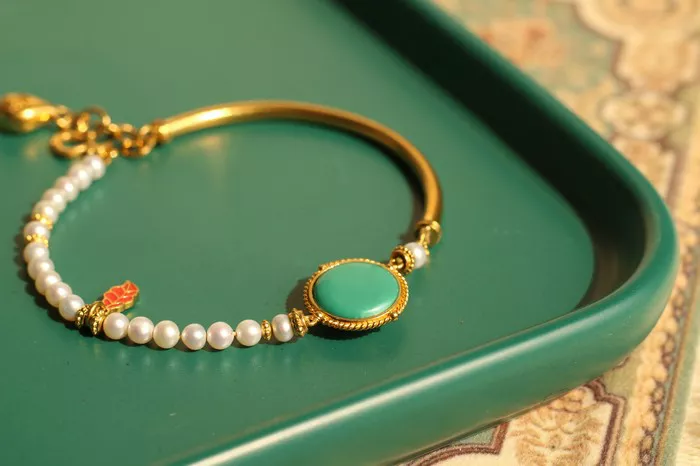In the intricate world of jewelry retail, where profit margins fluctuate like the diverse inventory on display, industry experts are shedding light on the art of pricing colored gemstones and cultured pearls. The prevailing consensus among jewelers is to value these exquisite stones higher than diamonds, sometimes up to three times more, contingent on their rarity.
The primary reason for this pricing approach is the absence of a standardized price list, akin to the one readily available for diamonds. While diamonds are governed by an industry pricing guide, which factors in considerations like abundance and quality, gemstones and pearls rely on evoking visceral emotions in collectors to drive sales.
Rarity plays a pivotal role in the pricing of gemstones, with the most coveted ones being nearly flawless in color, cut, and clarity. Similarly, pearls with fine luster and well-defined, round shapes command a premium over their imperfect counterparts. However, unconventional gem and pearl varieties, marked by quirks and flaws, enthrall collectors who willingly pay a premium for these unique finds.
Examples of such unconventional allure include oversize baroque pearls and keshi specimens, translating to “little mistakes” in Japanese. In the realm of gemstones, enhydro quartz, featuring water pockets, and other included stones, as well as rarely seen colors or material from swiftly depleted notable sources, capture the attention of discerning buyers.
While gemstones and pearls offer higher profit margins compared to diamonds, retailers face the challenge of investing more effort in sales, as the generic marketing strategies employed by diamond industry giants like De Beers do not extend to these other precious gems. Diamonds currently dominate nearly 60% of all jewelry sales in the United States, a testament to the years of robust promotional efforts dedicated to the category.
To gain insights into the world of gemstone retail, we turn to three retailers who share their perspectives on gemstone margins, challenges, and the most sought-after and investment-worthy items.
Clayton Bromberg, President, Underwood’s Jewelers, Jacksonville, Florida:
Markups: While larger margins are attainable with colored gemstones and pearls, the inventory turnover is lower compared to diamonds. Bromberg emphasizes the importance of individual beauty in gemstone purchases, given that color has not been commoditized.
Top Sellers: Royal blue and pink sapphires outperform Montana sapphires in bridal sales due to the unavailability of larger-sized Montanas.
Return on Investment: Over 45 years of sales, Bromberg notes that bigger diamonds, particularly those exceeding 3 carats, have historically yielded the most significant returns. In recent years, high-quality Big Three stones, especially emeralds and blue sapphires, have seen substantial increases in value.
Challenges: Bromberg advocates for industry peers to enhance their knowledge of gemstones and pearls to prevent the spread of misinformation to customers. He highlights the importance of understanding market dynamics and attending events like the Tucson gem show.
Charles Marks, Jeweler and Owner, Marks Jewelry Co., Wentzville, Missouri:
Markups: Marks Jewelry Co. offers finished color goods in superior quality at triple key prices, with an emphasis on utilizing knowledgeable staff for client presentations.
Top Sellers: The store focuses on basic color items like birthstone jewelry, with a commitment to competitive pricing. Marks refers clients elsewhere if competitive pricing cannot be achieved.
Return on Investment: Precious rubies, emeralds, and sapphires of the highest quality offer the best returns. Marks anticipates a return in value for diamonds once the current market downturn stabilizes.
Challenges: With an influx of jewelry from the Greatest Generation, Marks expresses concern about appropriately pricing pre-owned pieces without undervaluing the business.
Steve Weiss, President, Kirk Jewelers, Westlake Village, California:
Markups: Weiss notes favorable margins in both diamonds and gemstones, with sapphires outperforming emeralds. He suggests that the recent flatness in margins may be attributed to the presence of lab-grown diamonds in their inventory.
Top Sellers: Kirk Jewelers highlights a significant pearl sale, underscoring the appeal of South Sea necklaces. In bridal, the store accommodates requests for setting color stones into semi-mounts. Additionally, colored-stone rings are stocked for those seeking engagement rings with a unique flair.
Return on Investment: Weiss outlines the markup strategy, noting keystone for colored gemstones and 1.5 to 1.7 times the purchase price for diamonds on larger pieces.
Challenges: Weiss acknowledges a decrease in store traffic throughout the year, a common issue in the industry. He highlights the advantage of in-store sales where the romance of color stones can be experienced, as opposed to online transactions lacking a personal touch.
In conclusion, the intricate world of gemstone and pearl pricing reveals a delicate balance of rarity, individual beauty, and the challenges faced by retailers in a market dominated by diamond giants. As these experts assert, a deep understanding of gemstones and pearls is crucial for both industry professionals and consumers alike.


